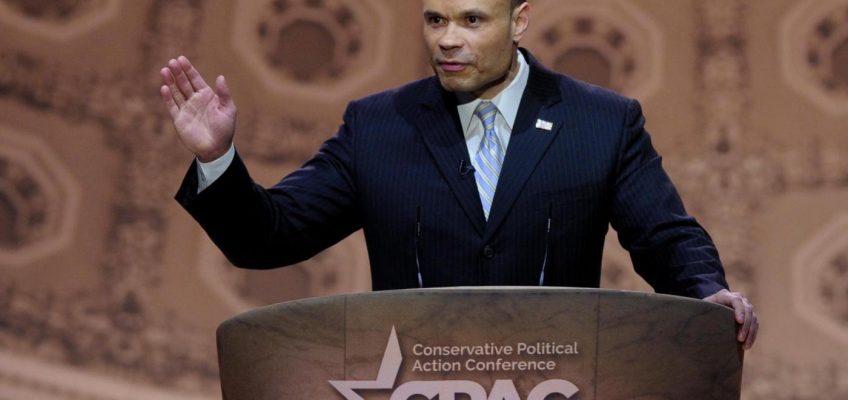By ADRIANA GOMEZ LICON and ERIC TUCKER, Associated Press
WASHINGTON (AP) — Dan Bongino, a former U.S. Secret Service agent who has penned best-selling books, ran unsuccessfully for office and gained fame as a conservative pundit with TV shows and a popular podcast, has been chosen to serve as FBI deputy director.
President Donald Trump announced the appointment Sunday night in a post on his Truth Social platform, praising Bongino as “a man of incredible love and passion for our Country.” He called the announcement “great news for Law Enforcement and American Justice.”
Related Articles
Trump will meet French and UK leaders as uncertainty grows about US ties to Europe and Ukraine
Justin Fox: No, Elon Musk hasn’t ‘discovered’ fraud at Social Security
Bruce Yandle: Are we witnessing ‘creative’ destruction or just plain destruction?
Zeynep Tufekci: Here are the digital clues to what Musk is really up to
George Floyd killing separated Trump from his generals
The selection places two staunch Trump allies atop the nation’s premier federal law enforcement agency at a time when Democrats are concerned that the president could seek to target his adversaries. Bongino would serve under Kash Patel, who was sworn in as FBI director at the White House on Friday and who has signaled his intent to reshape the bureau, including by relocating hundreds of employees from its Washington headquarters and placing greater emphasis on the FBI’s traditional crime-fighting duties.
The deputy director serves as the FBI’s second-in-command and is traditionally a career agent responsible for the bureau’s day-to-day law enforcement operations. Bongino, like Patel, has never served in the FBI, raising questions about their experience level when the U.S. is facing escalating national security threats.
The two are inheriting an FBI gripped by turmoil as the Justice Department over the past month has forced out a group of senior bureau officials and made a highly unusual demand for the names of thousands of agents who participated in investigations related to the Jan. 6, 2021, riot at the U.S. Capitol.
Bongino served on the presidential details for then-Presidents Barack Obama and George W. Bush, before becoming a popular right-wing figure. He became one of the leading personalities in the Make America Great Again political movement to spread false information about the 2020 election, which Trump and allies have continued to maintain was marred by widespread false even though such claims have been widely rejected as false by judges and former Trump attorney general William Barr.
For a few years following Rush Limbaugh’s death in 2021, he was chosen for a radio show on the same time slot of the famous commentator.
Bongino worked for the New York Police Department for several years in the 1990s before joining the Secret Service. He began doing commentary on Fox News more than a decade ago, and had a Saturday night show with the network from 2021 to 2023. He is now a host of The Dan Bongino Show, one of the most popular podcasts, according to Spotify.
Bongino ran for a U.S. Senate seat in Maryland in 2012 and for congressional seats in 2014 and 2016 in Maryland and Florida, after moving in 2015. He lost the three races.
During an interview last fall, Bongino asked Trump to commit to forming a commission to reform the Secret Service, calling it a “failed” agency and criticizing it for the two assassination attempts last year.
“That guy should have been nowhere near you,” Bongino said about the man who authorities say camped outside Trump’s golf course in West Palm Beach, Florida, before he was spotted with a rifle.
During the same interview, Trump praised the Secret Service agent who saw the rifle’s barrel coming out of a bush.
Patel and Bongino will succeed the two acting FBI leaders, Brian Driscoll and Robert Kissane, who have led the bureau since the departure in January of former Director Christopher Wray, who was appointed by Trump in 2017 and held the job for the next seven years before resigning at the end of the Biden administration to make way for his chosen success.
Associated Press writer Ali Swenson in New York contributed to this report.




